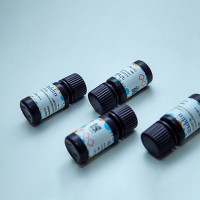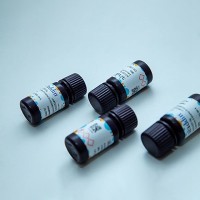Extraction and Purification of RNA from Plant Tissue Enriched in Polysaccharides
互联网
448
The isolation of uncontaminated, intact RNA is essential for analyzing gene expression and for cloning genes. However, plant tissue is notorious for being a difficult source from which to isolate high-quality RNA with good yield. This difficulty is primarily due to the presence of naturally occurrmg polysaccharides and/or polyphenols that are released during cell disruption. These compounds form complexes with nucleic acids during tissue extraction and coprecipitate during subsequent alcohol precipitation steps (1 –5 ). Depending on the nature and the quantity of these contaminants, the resulting alcohol precipitates can be gelatinous and difficult to dissolve. An RNA solution contaminated with polysaccharides and/or polyphenols is viscous and absorbs strongly at 230 nm. This UV absorption prevents an accurate quantitation of RNA concentration by a measurement of A260 (see Chapter 12 ). Furthermore, the contaminated RNA is not suitable for cDNA synthesis, reverse transcription PCR amplification, in vitro translation, or Northern analysis (6 ,7 ). The large number of publications of RNA isolation procedures reflects these difficulties and further demonstrates that the conditions required for successful isolation of RNA can differ significantly both between species and for the same species when grown under different environmental conditions (1 –7 ,11 ). We are interested in the effects of rising atmospheric CO2 on plant gene expression. Exposure of plants to elevated CO2 (e.g., 100 ppm) often results in a several-fold increase of total leaf carbohydrates, particularly starch and soluble polysaccharides, relative to ambient (360 ppm) grown plants. Therefore, the problem of carbohydrate contammation during RNA isolation is generally even more pronounced in plants grown at elevated CO2 .







